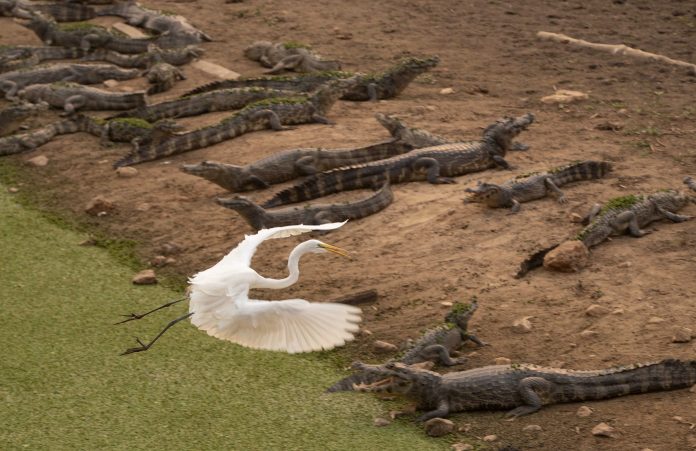
By DAVID BILLER
Associated Press
RIO DE JANEIRO (AP) — The number of fires in Brazil’s Amazon during September dropped to the lowest for the month in two decades, according to data from the Brazilian National Institute for Space Research.
September is historically Brazil’s worst month for forest fires and, while the data is positive, environmental experts question whether the trend will be confirmed by coming months.
The number of Amazon fires was just over half the level recorded in September last year, according to the data. That helped push down the nationwide total, along with a sharp drop in the amount of fires in the Pantanal wetlands. Fires in September retreated to the lowest number for the month since 2018, several months before President Jair Bolsonaro took office.
Since taking office, Bolsonaro has encouraged development within the Amazon and dismissed global complaints about its destruction as a plot to hold back the nation’s agribusiness. His administration also weakened environmental authorities and backed legislative measures to loosen land protections, emboldening land grabbers.
More recently, he has sought to demonstrate heightened environmental commitment in the face of criticism from the administration of U.S. President Joe Biden and troubled institutional investors. At the United Nations this month, he credited his administration’s redoubled efforts for the plunge of Amazon deforestation alerts in August, which followed a year-on-year decline in July. September results will be released in the coming week.
Environmentalists roundly dismiss his shift as disingenuous and say his deployment of the military to the Amazon is ineffective for preservation; an Associated Press investigation last year found the same results.
Márcio Astrini, executive secretary of the Climate Observatory, a network of environmental nonprofit groups, welcomed September fire data, but said he would need to see lower figures through at least year-end before declaring it a trend, particularly given still-elevated deforestation levels and limited enforcement.
“As government action in the Amazon is very weak, even with these variations, it’s hard to say it will be maintained. Why would it be maintained?” Astrini said. “The government isn’t there, there’s no repression. So it depends on the will of the people who are deforesting, setting fires.”
Severe drought and early data at the start of the forest fire season had raised widespread concern that this year’s blazes would reach the same destruction recorded in the past two years.
But rainfall in the Amazon during August was significantly above average. That was the main inhibitor keeping ranchers from setting fire to felled trees in September, which seemed “almost divine intervention,” said Ane Alencar, science director at the Amazon Environmental Research Institute.
By contrast in the Pantanal, the world’s largest tropical wetlands, there has been a shift in behavior from last year leading to far fewer fires, despite the ongoing drought that has rendered the area a powder keg, Alencar added. Fires are down by more than two-thirds in the first nine months of 2020 after last year’s explosion brought ruin to the local tourism industry.
“The disaster of last year served to help people better organize firefighting and prevention this year,” Alencar said. “The economic losses last year had an important impact in making people think more about their actions and, with peer enforcement, reduce the use of fire.”



















